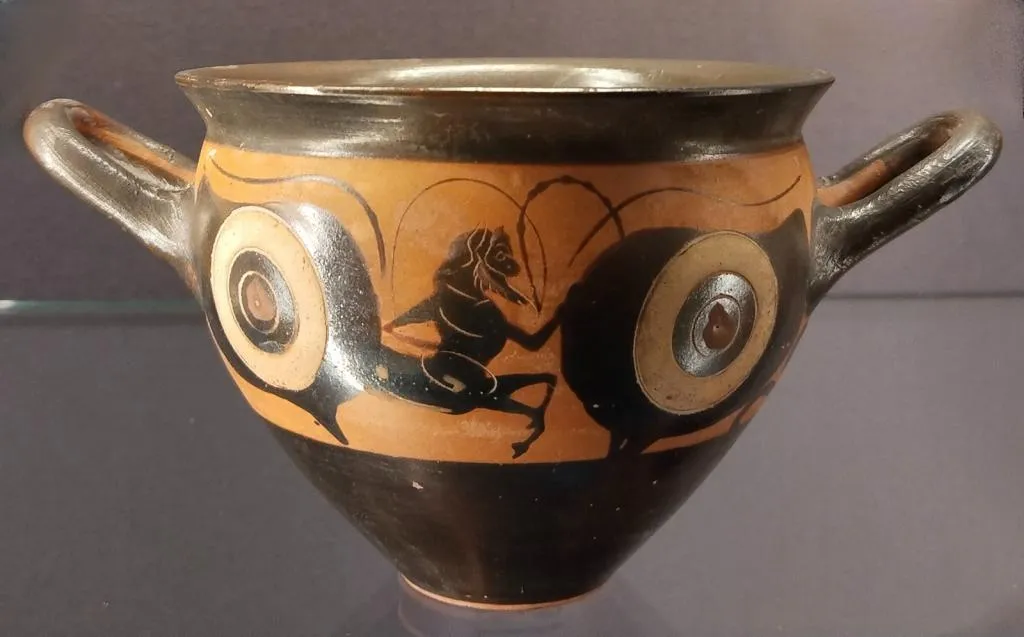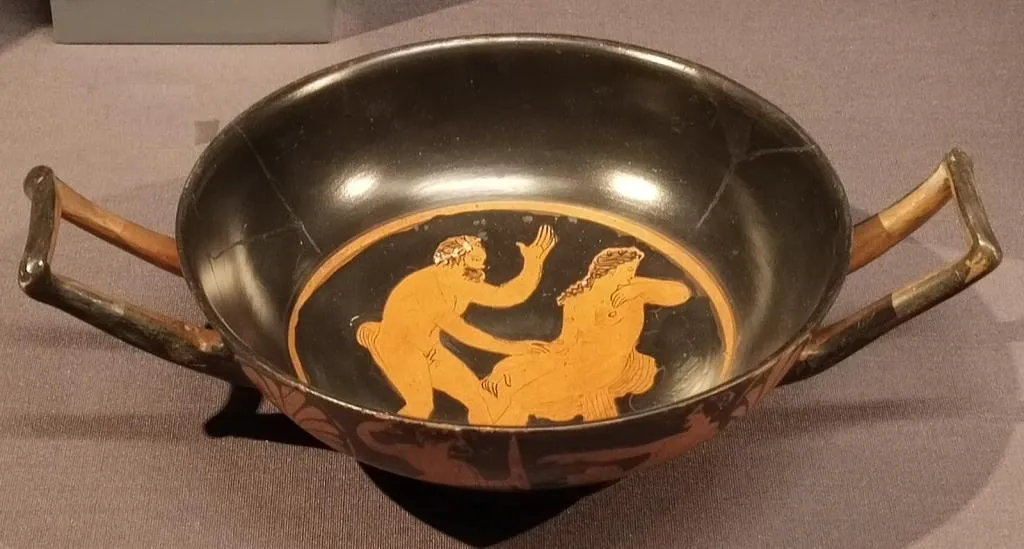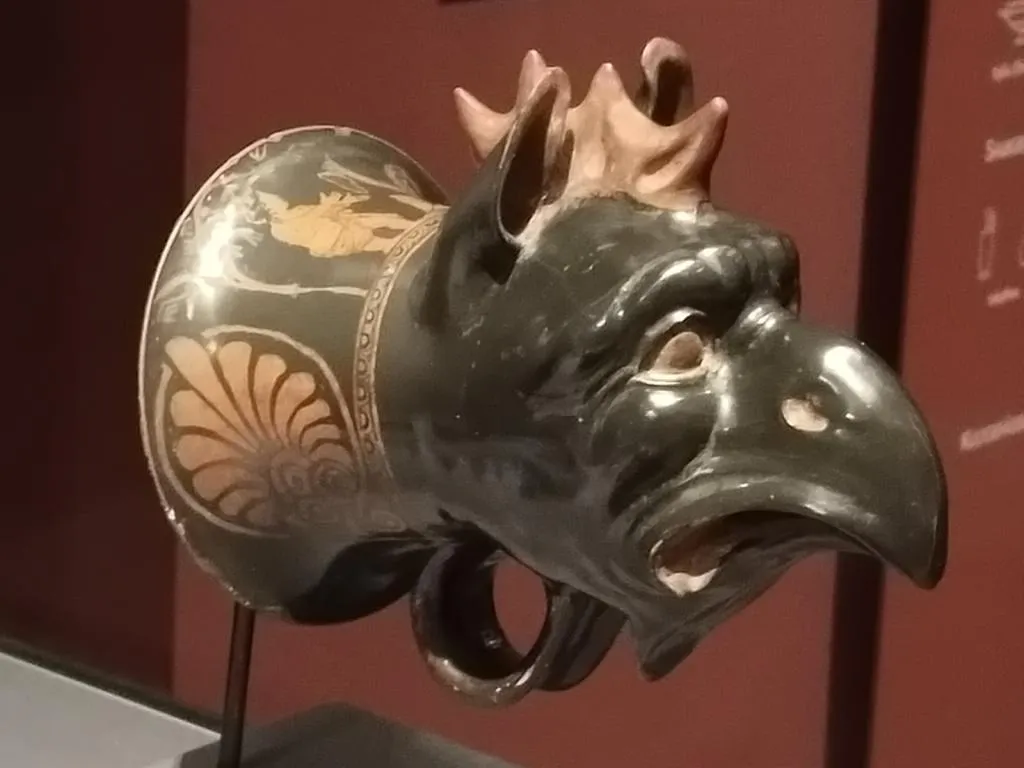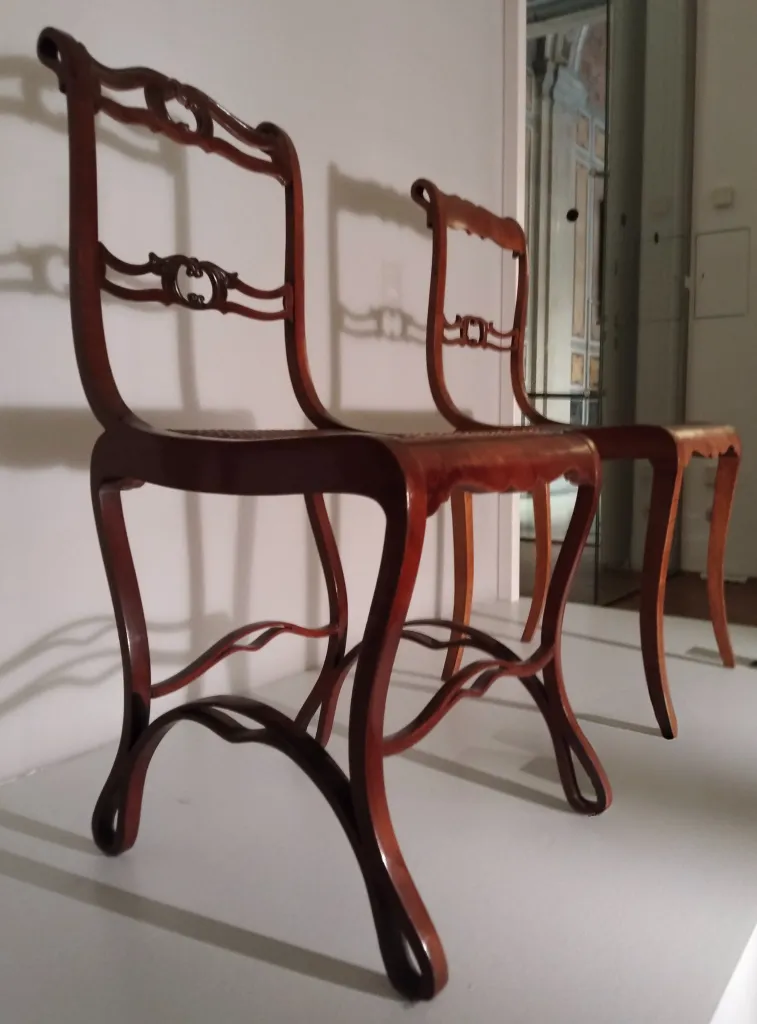Kantharos
Explore the kantharos (κάνθαρος), the iconic Greek wine cup with high-swung handles. See its role in ritual, myth, and daily life through ancient examples.
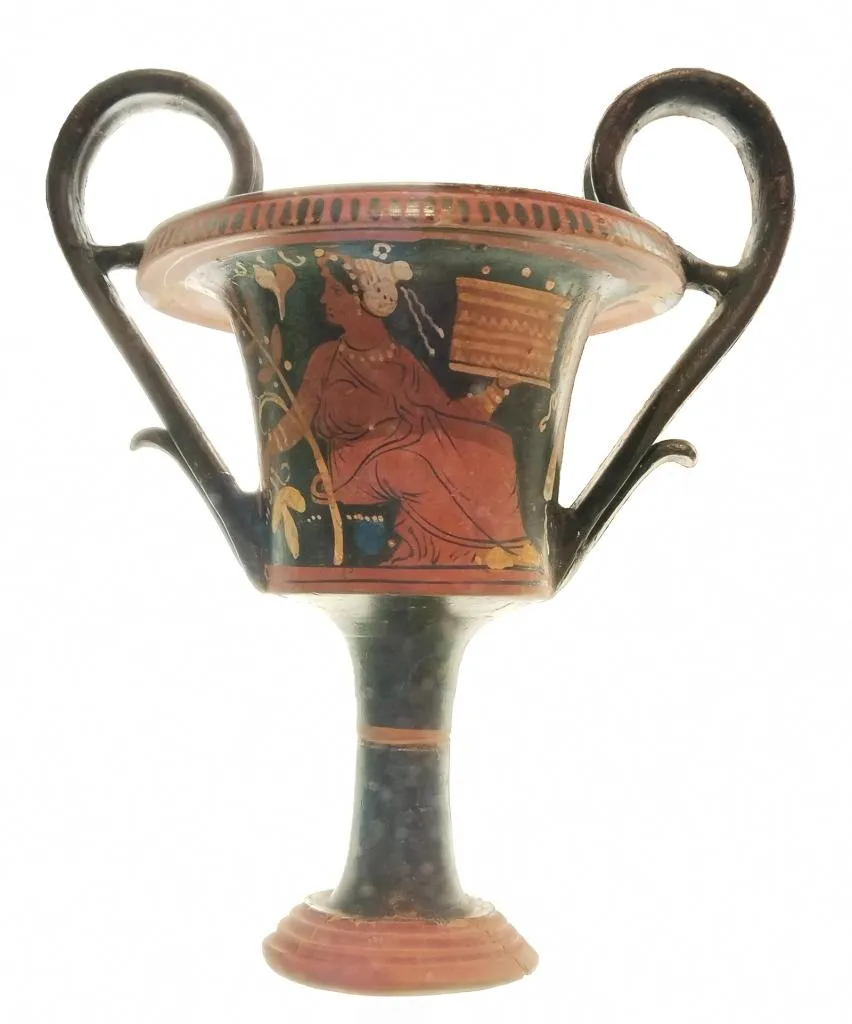
Source: by Stable MARK - own work.
This article presents a close look at the ancient Greek kantharos (κάνθαρος): its shape, purpose, origins, and meaning. Includes several authentic examples and visual comparisons.
Table of Contents
What is a Kantharos?Where did the kantharos come from?Dionysus and the KantharosWhat is the shape of the kantharos?What was the kantharos used for?What is a Kantharos?

Source: by Stable MARK - own work.
A kantharos (/ˈkænθəˌrɒs/; Ancient Greek: κάνθαρος) or cantharus (/ˈkænθərəs/) is a type of ancient Greek drinking cup, primarily used for wine consumption and ritual offerings. It’s easily recognized by its deep bowl, tall pedestal foot, and high arching handles that rise above the rim. The kantharos was also a symbolic vessel closely associated with Dionysus, the god of wine, fertility, and divine ecstasy.
Where did the kantharos come from?
The form likely originated in Greek metalwork before being widely reproduced in ceramic vessels. Though nearly all surviving examples are pottery, its design reflects metal prototypes from the early Archaic period.
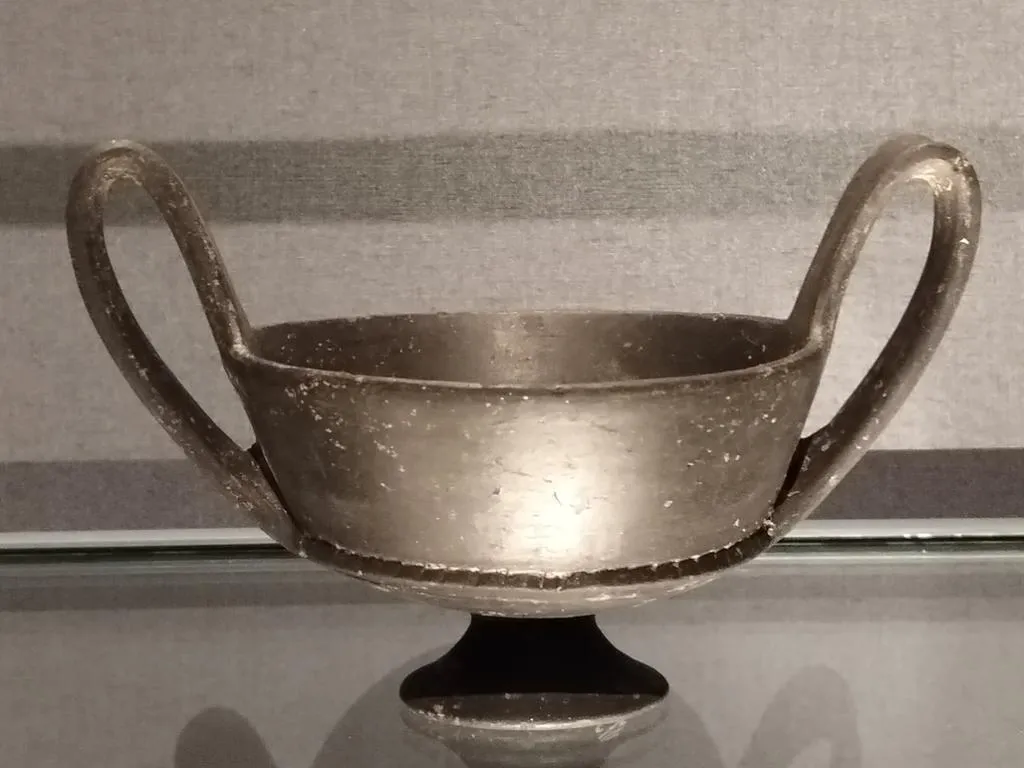
Source: by Stable MARK - own work.
Dionysus and the Kantharos
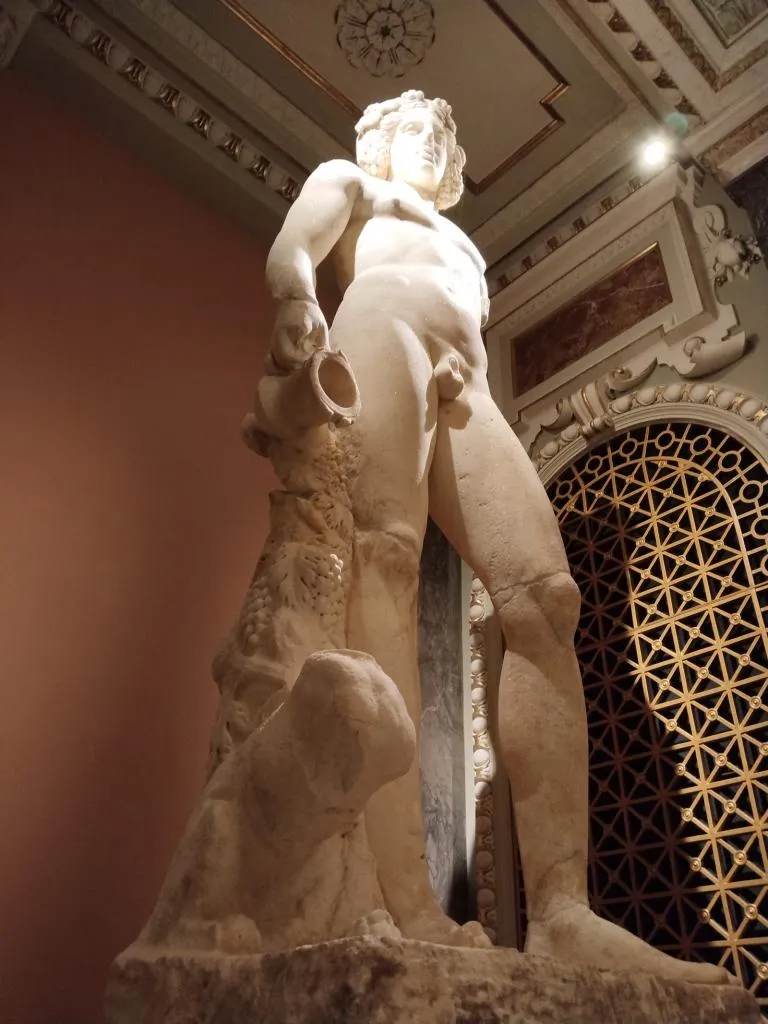
Source: by Stable MARK - own work.
The kantharos is closely associated with Dionysus, the Greek god of wine, vegetation, and fertility. In ancient art, Dionysus is often depicted holding a kantharos, symbolizing abundance, ecstasy, and the transformative power of wine. The vessel became his attribute, representing not only drinking but also the spiritual renewal and vital energy linked to nature and festivity.

Source: by Stable MARK - own work.
What is the shape of the kantharos?
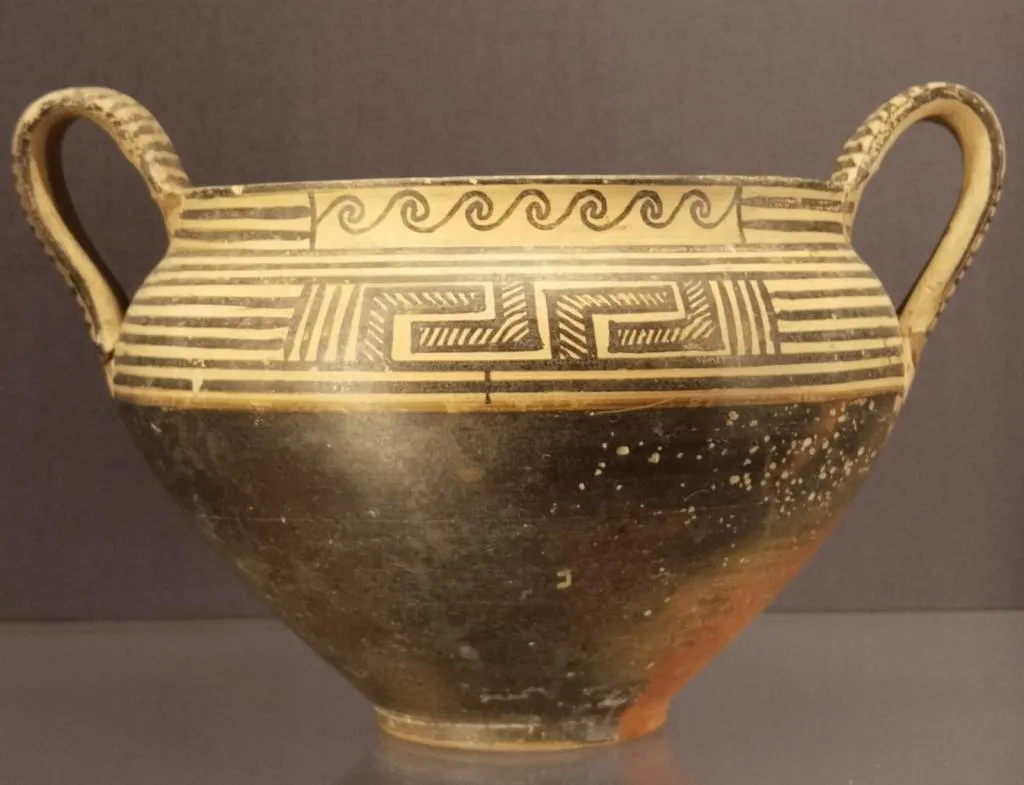
Source: by Stable MARK - own work.
The classic "Type A" kantharos features:
- A deep, round bowl
- A narrow pedestal base
- Two high-swung vertical handles that rise above the rim
Some variants include flaring rims, broader bowls, or looped handles.
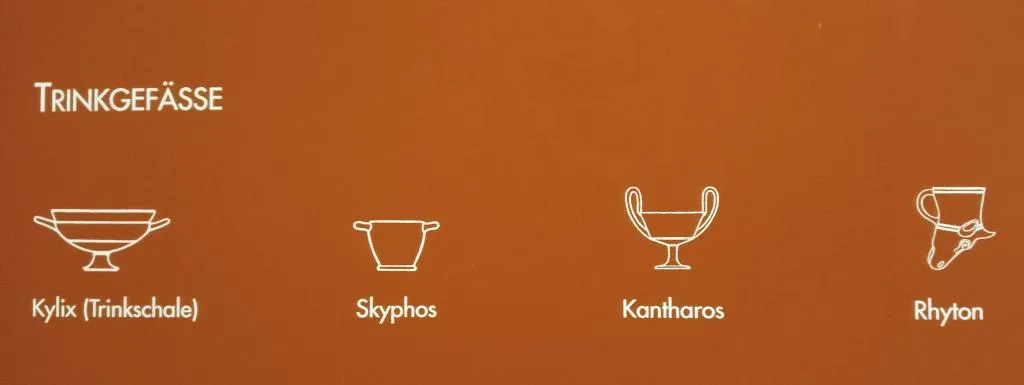
Source: by Stable MARK - own work.
Comparable forms of ancient drinking vessels include the Kylix (a wide, shallow cup), the Skyphos (a deep two-handled cup), the Kantharos (with high arched handles), and the Rhyton (a horn-shaped ceremonial vessel).
What was the kantharos used for?
The kantharos served a dual purpose:
- 1. Banqueting cup – used in symposia (drinking parties).
- 2. Ritual vessel – for libations and religious offerings, symbolizing rebirth, resurrection, and spiritual elevation through wine.
Dionysian imagery often includes kantharoi, held by satyrs, maenads, or Dionysus himself.
Share this article












